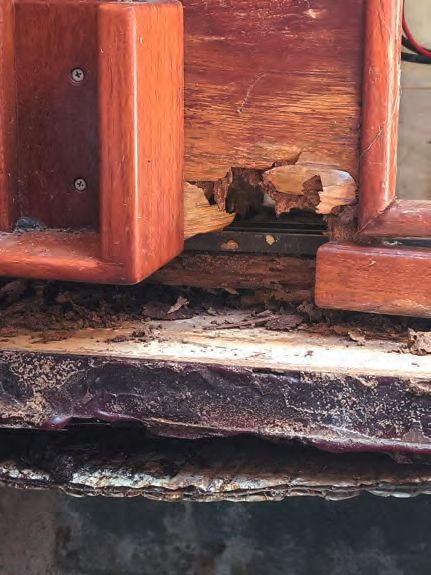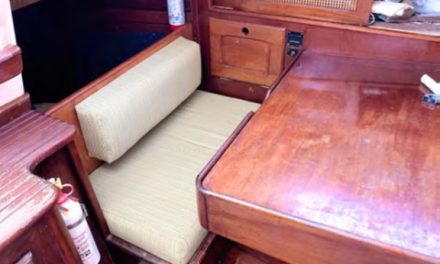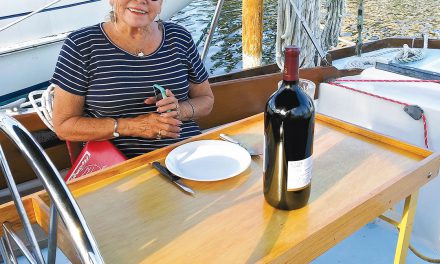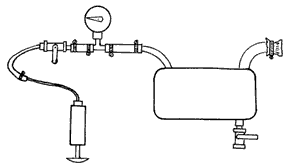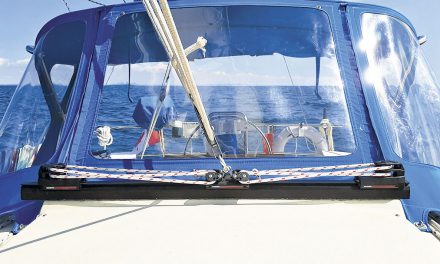How to fend off or fix an onboard termite infestation
Issue 154: Jan/Feb 2024
“Surely it can’t be that bad,” I mumbled to myself as I tapped the hollow-sounding plywood with a screwdriver. Seconds later, my screwdriver punched right through what had once been the galley countertop of my newly acquired Cape Dory 30, Brigadoon.
It was that bad. The plywood surrounding the freezer hold had the strength and consistency of damp cardboard, and it didn’t stop there. Most of the woodwork that comprised the aft portion of the galley was the same — a spongy, hollow mess covered by a thin veneer that crumbled at the touch. The once-beautiful Cape Dory craftsmanship had been utterly destroyed by a silent killer — the Formosan termite.
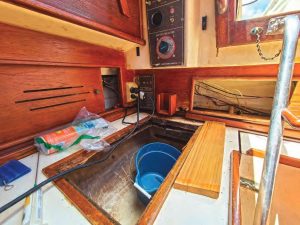
The epicenter of Brigadoon’s infestation was the freezer hold, which was dampened by a hatch leak overhead. Because Formosan termites avoid exposure, the damage extended far beyond what is visible here.
Formosan Termites
Formosan termites are a species of subterranean termite believed to have originated in China. They spread to Formosa (modern Taiwan) and Japan prior to 1600, and Hawaii by 1900. After World War II, they arrived in the United States in freight returning from the Pacific and quickly took hold in New Orleans. In the following decades, they spread throughout the Southeastern United States with tenacity and are now active in close to a dozen states, from Hawaii to Texas.
Formosan termites differ significantly from other termite species. They reproduce faster and are bolder foragers, resulting in colonies of millions of insects that spread with ease and rapidly consume any available wood. They reside in underground nests and avoid direct exposure, allowing them to take hold without being noticed. However, this does not limit their consumption to wood that is near or in contact with soil. Formosan termites are known to build foraging tunnels of “mud” (a mixture of chewed wood, soil, and waste) that extend upward from the soil to provide a sheltered path to untouched material. In this manner, a termite colony can access isolated regions of wood and spread throughout an entire structure with ease.
As part of their reproductive cycle, special winged Formosan termites called alates take flight and form swarms on late spring and early summer nights. These swarms can be extremely large and dense — a cloud of Formosan termites was once picked up by New Orleans area weather radar. After a brief swarming period, alates shed their wings and search for a mate. If one is located, a nest is established, eggs are laid, and a new colony begins. Because the termites are airborne during this time, they can easily travel over water and inevitably wind up aboard boats. Their ideal nesting location is damp, sheltered wood with easy access to water — sound familiar? Old boats are often one of the most attractive spots for these invaders to call home, and they can cause catastrophic damage in short order as they expand their colony.
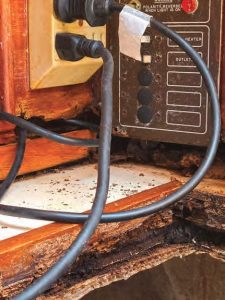
A closeup view of the galley damage
In all fairness, I had been warned. Brigadoon’s less-than-ideal condition was the only reason that I, a humble college student, could afford her in the first place. After her previous owner became unable to keep up with maintenance, she had been left untouched in the slip for several years. A minor leak in the companionway hatch had allowed the ingress of rainwater, which dripped down into the freezer hold and dampened the surrounding wood. This offered an ideal environment for termites, which moved in and began operating unchecked. The seller had notified me of these unwanted guests, but neither he nor I could see the full scope of the damage they had caused.
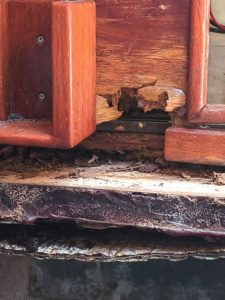
Galley termite damage
Until I began my restoration efforts in earnest, I was blissfully unaware of the destructive potential of Formosan termite infestations. These insects are a major pest responsible for billions of dollars in damage every year, and they pose a serious threat to any vessel within their range that has wood on board. Fortunately, they are not invincible. Boat owners can eradicate an ongoing infestation and prevent new ones from taking hold if they are armed with the right tools and knowledge.
The first step is knowing how to identify these pests. Formosan termites are small, white insects about the size of ants, but spotting them directly is a rare occurrence since they tend to avoid exposure. After swarming for a short time, airborne reproductive termites lose their wings and attempt to found a colony, so discarded wings inside your boat are often the earliest sign of their presence. If a colony is established, the next warning sign is frass, a waste product expelled by termites as they bore through wood. It resembles sawdust and can often be found near tunnel openings, but could be anywhere aboard.
Be sure to routinely search the dark, damp, and otherwise untouched corners of your boat when checking for signs of infestation. More advanced termite presence is indicated by mud tubes. These are pathways composed of frass and other waste and are similar in appearance to dirt. Formosan termites use these tubes to safely transit exposed regions when foraging. They often appear on vertical surfaces that receive a moderate amount of light and connect two unexposed regions. Spotting mud tubes on your boat is a serious warning that an established termite colony is thriving, expanding, and searching for more food — action should be taken immediately. It is also important to note that termites require a water source to thrive, so keeping the boat as dry as possible is an easy way to hinder potential infestations.
Identifying and eliminating a termite colony before it becomes established is by far the best way to ensure your boat’s safety. Constant vigilance is key for southern boaters, especially during swarming season. Cruisers hailing from northern ports should consider whether they have spent significant time in a region affected by Formosan termites and conduct inspections accordingly.
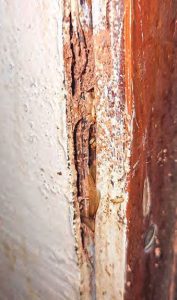
Plywood is a favorite food source aboard, especially if it’s damp. Formosan termites will consume the interior of a plywood panel while leaving a paper-thin veneer on the outside, giving the wood a wavy appearance and hollow sound.
Professional Fumigation
If your boat has been infested by termites, there are several paths forward. The first and most obvious option for many is to hire a pest control company to fog the boat with poison gas. Having a boat treated by a pest control company is one of the most effective methods for removing termites quickly. These companies have access to pesticidal fumigants that are unavailable to the general public and kill termites on contact. The boat is sealed off and flooded with gas for one to two days, during which it seeps into every crevice and tunnel to eradicate the colony. There is an important caveat, though — the gas leaves no residue and therefore does not prevent future infestations, so additional measures must be taken. This method of extermination is also typically costly, and pest control companies are often unwilling or unable to take on a boat.
Chemical Treatment
The expense, difficulty, and impermanence of fumigation treatments drive many boat owners to seek out DIY-friendly alternatives for termite eradication. Foremost among these are the chemicals fipronil and imidacloprid — two undetectable, slow-acting contact termiticides capable of eliminating an entire colony over a few months. These chemicals are the active ingredients in a variety of popular termiticide concentrate products including Termidor SC, Dominion 2L, and others. They are typically sold as concentrates that are diluted and sprayed onto areas where termites are active. Because the chemical residue left behind is undetectable by termites, they carry on their foraging activities and unknowingly pick up traces of the poison by contact or consumption of treated wood, then carry the chemical back to their nest and spread it amongst the colony.
By the time the delayed effects of the poison take hold and begin attacking the termites’ nervous systems, the number of affected individuals has increased exponentially and the colony is eliminated within 90 days. These treatments are rated to last from seven to 10 years in unexposed locations, meaning that future colonies will meet a similar end should they come in contact with the toxic residue. The overall result is a highly effective termite extermination treatment that is easy to apply, inexpensive, and provides long-term protection.
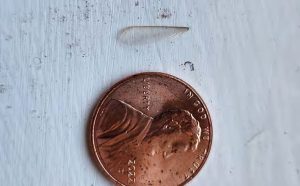
Formosan termite wings are light and papery, and are typically shed near entry points like hatches and windows.
Another popular chemical treatment is disodium octaborate, a borate salt that is the active ingredient in brands such as Bora-Care and Tim-bor. Borate salts are usually diluted with water and applied to unfinished wood, where the treatment soaks into the grain and prevents the breakdown of cellulose. As a result, the treated wood cannot be digested by termites or other wood-consuming organisms (including the fungus responsible for decay). However, this method kills termites by ingestion only — they must consume treated wood to be affected, and the chemicals are not transmitted throughout the colony as with fipronil or imidacloprid. Hence, borate products are best used as a protective measure against future infestations or the spread of current ones.
As always, it’s important to consider the safety of yourself and the environment when using poisons. While there is no direct evidence of fipronil causing cancer in humans, it is classified by the EPA as a Group C carcinogen (possible human carcinogen). Despite being relatively benign to mammals, fipronil is extremely toxic to aquatic life and other non-harmful insects such as bees. Similarly, imidacloprid is classified as an EPA Group E (unlikely) carcinogen but is very toxic to bees, aquatic life, and some birds. Always exercise due caution when using these termiticides and never dump excess overboard. Consult pesticide labels for safety and disposal information specific to the product.
Overall, borates are much less toxic than other termiticides and will rapidly decompose into relatively harmless boron in nature. Disodium octaborate has not been marked as a carcinogen but is classified as a reproductive hazard in the European Union, so exercise due caution. While relatively safe for humans and other mammals, it is mildly toxic to some fish and aquatic invertebrates and should not be allowed to run off into waterways. As with any other chemical, read the safety label and adhere to usage instructions.
Thermal Treatment
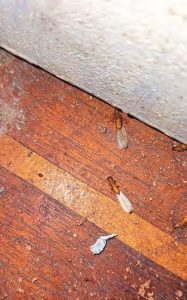
Numerous colonies often swarm on the same night, resulting in an airborne flood of termites.
While chemical treatments are the most common method for termite removal, there are options for those seeking to avoid pesticides. The simplest non-chemical alternative is a radical temperature change. Formosan termites cannot tolerate extended periods of cold weather, which is why their distribution within the U.S. does not extend north of 35N. Research on termite cold tolerance shows that their eggs cannot hatch below 68 F, while the insects themselves will become immobilized and die at temperatures below 40 F. Overwintering in a frigid harbor is a good way to wipe out a colony with little effort. Though simple, this approach requires a captain and vessel ready to cruise north for an extended period and is not suited to less mobile boaters or project boats that cannot relocate.
For boat owners in hotter climates, extreme heat holds potential. Studies on the heat tolerance of Formosan termites indicate that there are two methods for heat treatment: brief exposure to very high temperatures, or prolonged exposure to moderately high temperatures. Temperatures of 122 F or higher are almost immediately lethal to termites, while temperatures around 110 F can kill the insects within five to seven days. While it may seem easy to build up this kind of heat inside the boat on a summer day, these temperatures must reach the termite nest to be effective. Hence, higher temperatures and longer exposure times are necessary to ensure that the heat soaks into the infested wood and reaches the majority of the termites.
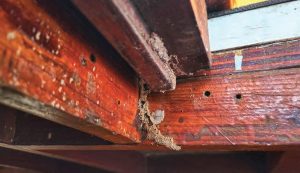
These tubes are used as highways for the transportation of workers and food across exposed areas.
Given that, boat owners have two heat treatment options: reach a peak temperature of around 130 F or higher for 30 to 60 minutes, or maintain a constant temperature of at least 115 F for about seven days. In both cases, a haulout would be necessary to prevent heat loss to the surrounding water. Finally, extreme heat and exposed heating elements could present a fire hazard, in addition to possibly damaging interior finishes and plastic components, so careful consideration, preparation, and monitoring is a must.
Tropical Hardwoods and Marine Plywood
If your boat has suffered from even a minor termite invasion, you’ll likely be replacing some woodwork. Using termite-resistant wood for new construction is a great foundation for infestation prevention, and can serve as a final line of defense if all else fails. Despite their voracious appetites, Formosan termites do demonstrate an inclination towards some wood species and an aversion to others. To better understand this behavior, the U.S. Department of Agriculture conducted a study aimed at identifying Formosan termites’ feeding preferences among 24 different species of wood. The study found that the most preferred woods by a hefty margin were yellow birch, red gum, Parana pine, sugar maple, and pecan, while only moderate preference was shown for white and red oak, balsa, Alaskan yellow cedar, bald cypress, and ash. The least preferred woods included Indian, Honduran, and Bolivian rosewood, Honduran mahogany, Spanish cedar, eastern and western red cedar, Alaskan yellow cedar, and sinker cypress.
Although not included in the 24 wood species studied by the USDA, the teak that adorns so many good old boats is also known for deterring termites. In a different study, teak blocks were placed in direct contact with active Formosan termite colonies in the wild and left for six weeks under ideal feeding conditions. The results showed no consumption of the teak, indicating that the termites preferred other food sources and will likely avoid the teak on a boat in favor of other woods. Nonetheless, teak is generally considered to be only moderately resistant to termite attack, so it’s not safe to assume it will go untouched in an infestation.
But what about plywood? After all, it’s one of the most common materials aboard and probably the main food source available to termites. While it’s safe to say that lower grades of untreated plywood are easy targets, it is tempting to believe that marine plywood is immune. However, neither okoume nor meranti, the woods commonly used in most marine plywood, are considered termite-resistant. One look at the remnants of Brigadoon’s countertops convinced me that whatever plywood the builders at Cape Dory used was certainly edible by termites. Unless treated with a termiticide by the mill, any plywood being used in construction should be protected to ensure it does not become a target.
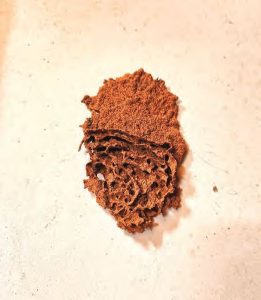
Formosan termites can build dense, intricate nests even in narrow or confined spaces.
Using wood that is repellent or even toxic to termites is an excellent strategy but probably shouldn’t be the only line of defense. The best treatment for lumber and plywood alike is a borate-based termiticide applied after all cuts are made but before any other finishing. These products dry clear, are relatively nontoxic, and offer lifetime protection of unexposed wood.
With all of these treatment options under consideration, I began to develop a strategy for my own infestation aboard Brigadoon. Although Formosan termites are common in the New Orleans area, I struggled to find a professional extermination service that would take on a boat. The costs were far beyond my budget and I was discouraged by the fact that this method did not grant any lasting protection. Average daytime highs of 92 F in the summer led me to consider thermal treatment, but I ultimately decided against it. I wasn’t prepared to take full advantage of the required haulout and was concerned about damaging the unaffected interior regions with excessive heat.
I eventually settled on fipronil-based Termidor — an affordable solution with lasting protection that became the backbone of Brigadoon’s termite treatment. Once the areas with active termites were located, it was a simple matter of mixing and spraying the pesticide into nearby tunnels and the surrounding wood. Termidor concentrate was mixed with tap water at a 0.125% concentration in a common hand-pump sprayer per the manufacturer’s instructions. By pressurizing the sprayer and pressing the nozzle right up to tunnel entrances, the termiticide can be injected into the tunnel network. Fipronil works by direct contact and consumption, so applying it to areas with confirmed active termites accelerated distribution to the colony. For good measure, I also applied a liberal dose to untouched areas of the boat as a safeguard against spreading or future infestations.
Much to my satisfaction, I saw no more termites or evidence of their activity within a few months. I had finally managed to halt the invasion aboard Brigadoon, but the damage was permanent. Nothing short of total removal and replacement could bring back the galley. Now, with the project in the rebuild phase, the focus has shifted to termite prevention. I am using termite-resistant bald cypress for non-cosmetic framing and supports, and teak for cosmetic and exterior components. All plywood and lumber, regardless of grade or species, is treated with Bora-Care at a 1-1 water/chemical ratio (the strongest recommended concentration) after cutting and sanding. When swarming season approaches, I am applying a fresh layer of Termidor mixed at 0.09% concentration to hatches and potential entry points. Finally, I am conducting frequent checks for signs of new activity, especially when swarming occurs.
Formosan termites are a devastating pest that wreak havoc upon old boats, but they don’t have to be a death sentence. As with any other maintenance issue aboard, avoiding disaster is simply a matter of combining knowledge and diligence.
Neil Sand dove into the world of sailing as a graduate student and quickly developed a passion for sailboats. He enjoys applying his mechanical engineering education to the restoration and repair of old boats. He is currently restoring and sailing his Cape Dory 30, Brigadoon, on Lake Pontchartrain.
Thank you to Sailrite Enterprises, Inc., for providing free access to back issues of Good Old Boat through intellectual property rights. Sailrite.com

